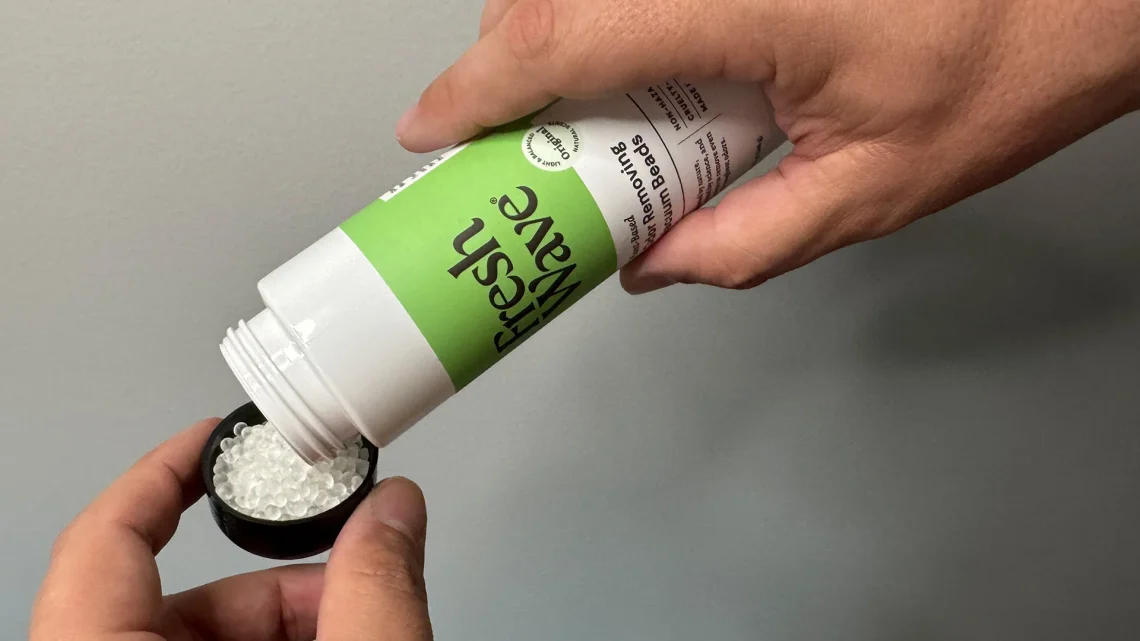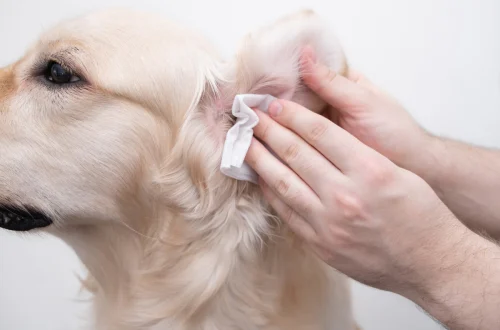There’s nothing quite as disappointing as anticipating the satisfaction of a freshly vacuumed home, only to be greeted by that all-too-familiar dusty, stale smell that seems to emanate from your vacuum cleaner. This common problem occurs because vacuum bags and filters trap not just dirt and debris, but also odors that can accumulate over time. The result is a cleaning experience that leaves your home smelling less than fresh.
Fortunately, there’s a simple, natural solution that can transform your vacuuming routine from a necessary chore into a genuinely pleasant experience. By scenting your vacuum filter or bag with natural ingredients, you can ensure that every sweep leaves your home smelling clean and fresh. This approach not only eliminates unpleasant odors but can also provide subtle aromatherapy benefits as you clean.
Understanding Vacuum Odors
To effectively address vacuum odors, it’s important to understand why they occur in the first place:
The Science of Trapped Odors
When your vacuum cleaner operates, it pulls air through its system, trapping dust, pet dander, food particles, and other microscopic debris in either a bag or filter. Many of these particles carry odors that become concentrated in the vacuum’s collection system. Over time, these trapped particles can develop their own musty or stale smell, which is then released back into your home during use.
Contributing Factors
Several factors can intensify vacuum odors:
- High Humidity: Moisture in the air can cause trapped particles to develop mold or mildew.
- Pet Ownership: Pet hair and dander carry distinctive odors that can accumulate in vacuum systems.
- Infrequent Bag/Filter Changes: The longer debris remains trapped, the more time it has to develop odors.
- Food Particles: Crumbs and other food debris can start to decompose, creating unpleasant smells.
The Simple Trick: Natural Scenting
The key to a refreshing vacuum experience lies in introducing pleasant, natural scents directly into your vacuum’s air pathway. This approach works by:
- Masking existing unpleasant odors with more desirable scents
- Creating a positive association with the vacuuming process
- Providing subtle aromatherapy benefits during cleaning
- Ensuring that expelled air carries a pleasant fragrance rather than stale odors
What to Use for Natural Vacuum Scenting
There are several natural options for scenting your vacuum, each with its own benefits and considerations:
Essential Oil Solutions
Essential oils are among the most popular and effective options for vacuum scenting. They offer concentrated, long-lasting fragrance and potential therapeutic benefits:
- Lavender: Promotes relaxation and has natural deodorizing properties
- Lemon: Provides a fresh, clean scent and has antibacterial properties
- Peppermint: Offers an invigorating scent and natural antimicrobial benefits
- Eucalyptus: Creates a spa-like atmosphere and has decongestant properties
- Tea Tree: Known for its purifying qualities and fresh scent
Herbal Options
Dried herbs and spices can also provide natural fragrance:
- Rosemary: Offers a fresh, herbaceous scent and is naturally antimicrobial
- Thyme: Provides a warm, earthy fragrance with purifying properties
- Cinnamon Sticks: Create a warm, inviting aroma (use sparingly)
- Citrus Peels: Dried lemon, lime, or orange peels offer a fresh, zesty scent
Instructions for Safe Application
The key to successful vacuum scenting is proper placement and moderation. Follow these guidelines for the best results:
- Essential Oil Method: Place 2-3 drops of your chosen essential oil on a cotton ball or small piece of fabric. Tuck this safely into the bag compartment, ensuring it won’t be sucked into the vacuum motor.
- Herbal Method: Place a small amount (about a teaspoon) of dried herbs in a breathable sachet or cloth pouch. Position this in the bag area where it won’t interfere with vacuum function.
- Important: Never place liquids directly in the bag compartment, as this could damage your vacuum.
- Filter Scenting: If your vacuum has a washable filter, add 1-2 drops of essential oil directly to the filter after it has dried completely from cleaning. Allow the oil to absorb before reassembling.
- Near Filter Placement: Place a cotton ball with essential oils or a sachet of dried herbs near (but not touching) the filter compartment. Ensure proper ventilation and that nothing can be sucked into the motor.
- Canister Method: For upright models, place scented materials in the base area where dust collects, but away from moving parts.
- Unit Scenting: Place scented materials in the main unit’s collection area, following manufacturer guidelines for safe placement.
- Vent Scenting: Add a few drops of essential oil to a cotton ball and place it near the vent where clean air exits back into your home.
Creating Custom Scent Blends
One of the joys of natural vacuum scenting is the ability to create custom fragrance combinations that suit your preferences and needs:
Seasonal Blends
- 5 drops sweet orange essential oil
- 3 drops lemon essential oil
- 2 drops peppermint essential oil
This combination creates an uplifting, energizing atmosphere perfect for deep spring cleaning.
- 4 drops eucalyptus essential oil
- 3 drops lemon essential oil
- 2 drops tea tree essential oil
- 1 drop peppermint essential oil
This refreshing blend helps combat summer heat and humidity while providing a spa-like experience.
- 4 drops cinnamon essential oil
- 3 drops orange essential oil
- 2 drops clove essential oil
Warm and inviting, this blend creates a cozy atmosphere as you prepare for cooler months.
- 4 drops pine essential oil
- 3 drops frankincense essential oil
- 2 drops cedarwood essential oil
This woody, resinous blend evokes the feeling of a warm fireplace and fresh evergreen decorations.
Maintenance and Refreshing
To maintain the effectiveness of your vacuum scenting, regular maintenance is important:
Monitoring Scent Strength
The intensity of your added scents will naturally decrease over time due to several factors:
- Vacuum Use Frequency: More frequent vacuuming will cause scents to dissipate faster.
- Airflow: Higher suction settings may pull scents through more quickly.
- Oil Volatility: Some essential oils are more volatile than others and will fade faster.
Refreshing Guidelines
Follow this schedule for optimal scent maintenance:
- Light Use (1-2 times per week): Refresh scents every 4-6 weeks
- Moderate Use (3-4 times per week): Refresh scents every 2-3 weeks
- Heavy Use (daily): Refresh scents weekly
Refreshing Process
- Remove old scented materials carefully, disposing of them properly.
- Clean the area where scents were placed to remove any residual oils or particles.
- Add fresh scented materials using the same guidelines as initial application.
- Run the vacuum for a few seconds without cleaning to distribute the new scent.
Safety Considerations and Best Practices
While natural vacuum scenting is generally safe, certain precautions should be observed:
Pet Safety
If you have pets, especially cats, some essential oils can be toxic:
- Avoid using tea tree, eucalyptus, or citrus oils if you have cats.
- Stick to pet-safe options like lavender (in small amounts) or plain cotton scented with water.
- Ensure scented materials are completely enclosed and cannot be accessed by pets.
Allergy Considerations
For household members with allergies or sensitivities:
- Use minimal amounts of scent or avoid it altogether if someone is particularly sensitive.
- Test new scents in small amounts to ensure no adverse reactions.
- Consider unscented alternatives like plain cotton balls for those with fragrance sensitivities.
Equipment Protection
To protect your vacuum investment:
- Never place liquids directly in areas where they could contact electrical components.
- Ensure scented materials are securely placed and cannot become dislodged during operation.
- Avoid using excessive amounts of oils that could potentially damage plastic components over time.
Advanced Techniques and Tips
For those who want to maximize their vacuum scenting experience:
Combining with Regular Maintenance
Use vacuum scenting as motivation for regular maintenance:
- Schedule scent refreshes to coincide with bag changes or filter cleaning.
- Use different seasonal scents as reminders for seasonal deep cleaning.
- Create a maintenance log to track when scents were last refreshed.
Multi-Sensory Cleaning
Enhance your cleaning experience by combining vacuum scenting with other natural cleaning methods:
- Use the same essential oils in your homemade cleaning products for a cohesive scent experience.
- Play matching aromatherapy music while cleaning to enhance the sensory experience.
- Time your vacuuming to coincide with other activities that benefit from the same scents.
Troubleshooting Common Issues
Even with proper technique, you might encounter some challenges:
Overpowering Scents
If your vacuum scent seems too strong:
- Reduce the number of drops of essential oil used.
- Move scented materials further from the air intake.
- Use lighter, more subtle scents like lavender instead of strong spices.
No Noticeable Scent
If you can’t detect your added fragrance:
- Check that scented materials are properly placed and not blocked.
- Increase the amount of essential oil or use more potent oils like peppermint.
- Ensure your vacuum has adequate suction to pull the scent through the system.
Unpleasant Mixed Odors
If scents are combining in undesirable ways:
- Clean your vacuum thoroughly to remove old scent residues.
- Stick to single-note scents rather than complex blends.
- Allow one scent to fully dissipate before introducing another.
Environmental and Economic Benefits
Beyond the immediate benefits of a fresher-smelling home, natural vacuum scenting offers additional advantages:
Reduced Chemical Exposure
By using natural scents instead of commercial air fresheners or scented vacuum bags:
- You reduce your family’s exposure to synthetic fragrances and chemicals.
- You decrease the amount of plastic packaging waste from commercial products.
- You avoid contributing to indoor air pollution with aerosol sprays.
Cost Savings
Natural vacuum scenting is remarkably economical:
- A single bottle of essential oil can provide months of vacuum scenting.
- Common kitchen items like citrus peels can be repurposed for scenting.
- Compared to commercial scented vacuum products, you’ll save $20-40 annually.
Conclusion: Transform Your Cleaning Routine
Adding natural scents to your vacuum cleaner is a simple yet transformative change that can significantly enhance your home cleaning experience. What was once a mundane, sometimes unpleasant chore can become a sensory journey that leaves your home not just clean, but truly refreshed.
The beauty of this approach lies in its simplicity and customization. Whether you prefer the calming properties of lavender, the invigorating freshness of citrus, or the warm comfort of seasonal spices, you can tailor your vacuum’s scent to match your mood, the season, or your cleaning goals. This personalization turns a routine household task into an opportunity for self-expression and environmental mindfulness.
Moreover, the health and environmental benefits of choosing natural scenting methods cannot be overstated. By avoiding synthetic fragrances and aerosols, you’re creating a safer, cleaner indoor environment for your family while reducing your ecological footprint. The economic advantages are equally compelling – for a minimal investment in essential oils or dried herbs, you can enjoy months of improved vacuum performance.
As you implement these natural scenting techniques, you may find that your relationship with housework begins to shift. Cleaning becomes not just a duty, but a form of self-care and home nurturing. Each sweep of your vacuum becomes an opportunity to refresh your space and uplift your spirits through the power of natural fragrance.
So why not give it a try? Start with a simple essential oil on a cotton ball, place it safely in your vacuum, and experience the difference for yourself. You might just discover that the secret to a truly refreshed home was hiding in plain sight, waiting for you to unlock it with nothing more than a few drops of nature’s essence.





